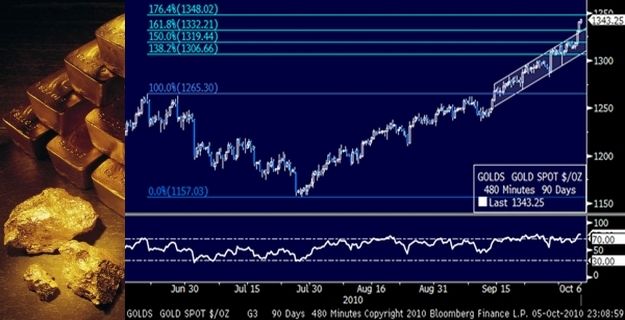Unlike previous days, investors turned their attention to the shares, encouraged by the pact reached between Washington and Beijing, which includes a tariff reduction greater than the one planned.
He gold He experienced a strong fall this Monday, May 12, retreating 3.06% to US $ 3,241.80, after the 90 -day commercial truce announced by the United States and China. The precious metal, which had been marking historical maximums in recent weeks due to the tension between both powers, loses appeal to the renewed appetite for risk assets.
The content you want to access is exclusive to subscribers.
Unlike previous days, investors turned their attention to the shares, encouraged by the pact reached between Washington and Beijing, which includes a tariff reduction greater than the one planned. As a result, the main Wall Street indices registered increases above 3%, promoted by the expectations that this gesture marks the beginning of a broader commercial agreement in the coming months.


Historical Gold Maximum.- The Troy ounce marked its historical record on December 6 by closing at US $ 1,418.50 in New York. The metal market is promoted by speculative funds and investors looking for refuge in the face of economic problems

Unlike previous days, investors turned their attention to shares
“The markets have enthusiastically received this attempt to understand between the United States and China,” said Russ Mould, AJ Bell Investment Director. “Although the truce is temporary, it represents a significant advance. The simple fact that there is dialogue is already an achievement, considering the hard confrontation they have maintained during Trump’s mandates, ”he added.
For some analysts, the mere continuity of the negotiations would have already been considered a positive result. However, the scope of the initial agreement and the rapid reduction of tariffs surprised the market favorably.
In this context, the assets considered refuge, such as gold, are punished, while the actions – participating the Americans – emerge as the great winners of this day of geopolitical relief.
How oil and soy operated, after the truce between the two powers
The Brent rose 1.7% and was around US $ 65 per barrel, while WTI did the same until reaching US $ 62. The expectation of greater economic dynamism after commercial distension between the two largest economies in the world promoted the expected demand for crude oil.
The soybean also reacted, a key commodity for Argentina. Its contribution for the contract to Julio advanced 1.7% to US $ 393 per ton, approaching US $ 400. The oleaginosa was one of the most affected by the commercial war, since China – world buyer – was moving its purchases from the United States to Brazil.
Source: Ambito
I am a 24-year-old writer and journalist who has been working in the news industry for the past two years. I write primarily about market news, so if you’re looking for insights into what’s going on in the stock market or economic indicators, you’ve come to the right place. I also dabble in writing articles on lifestyle trends and pop culture news.




